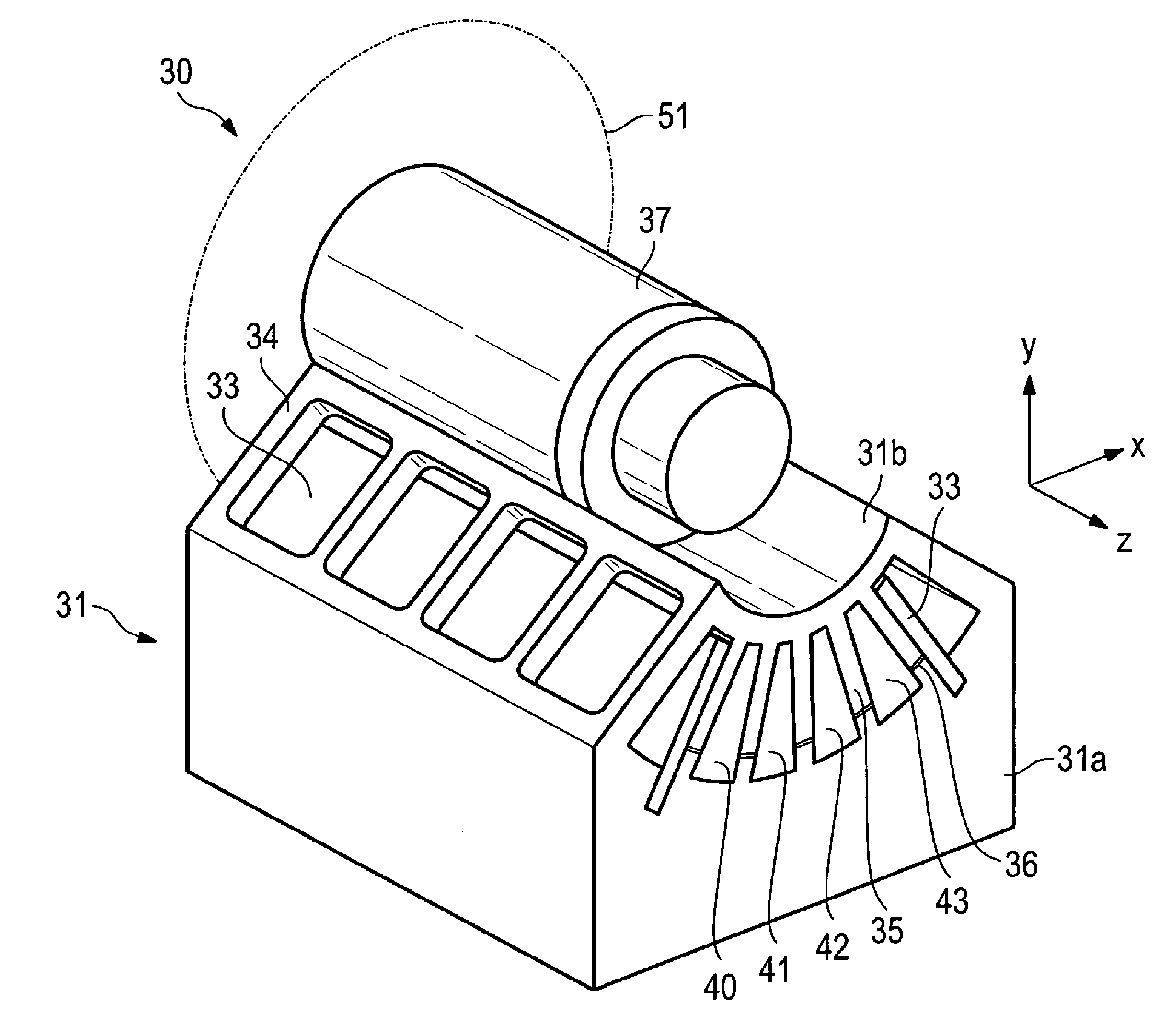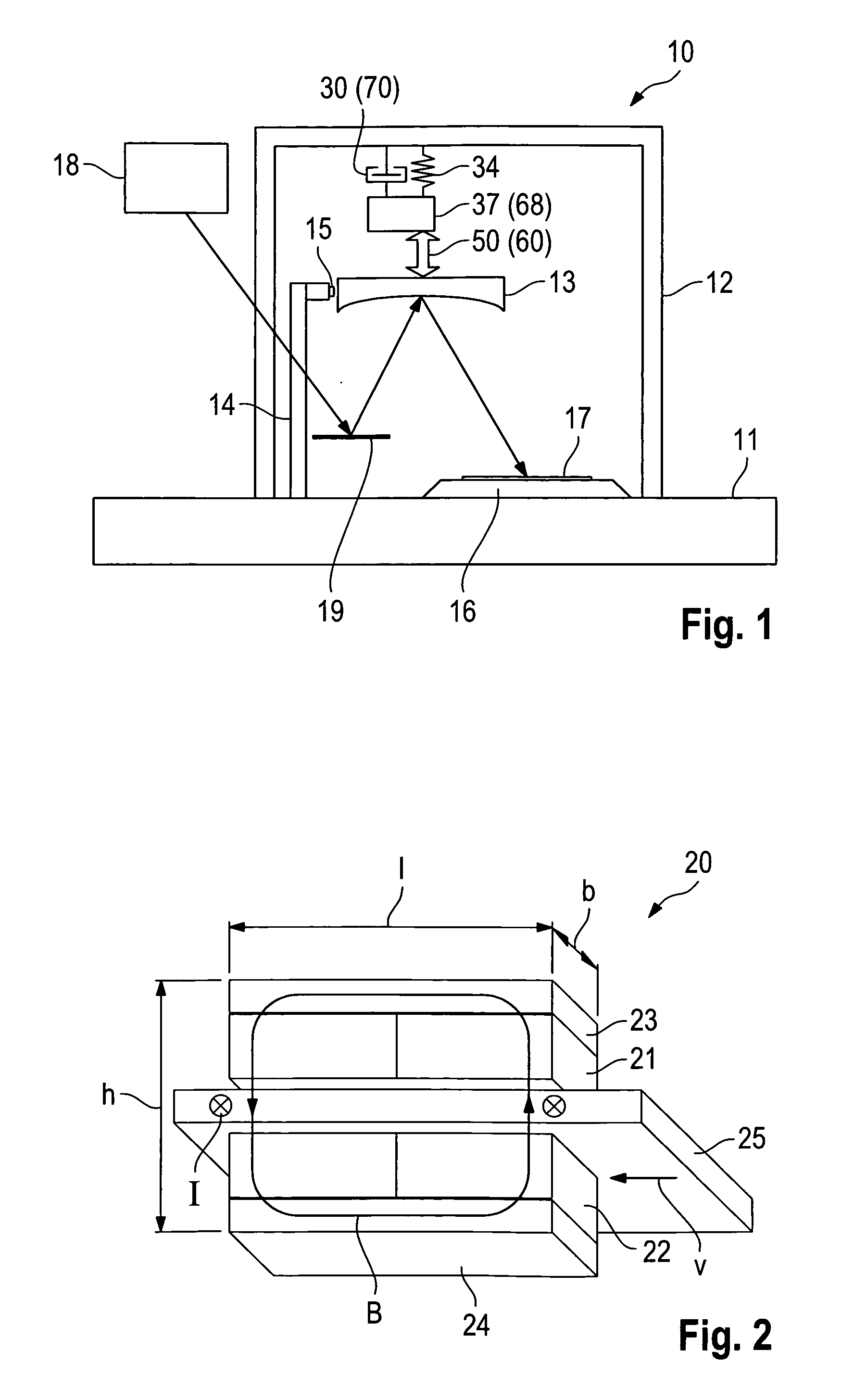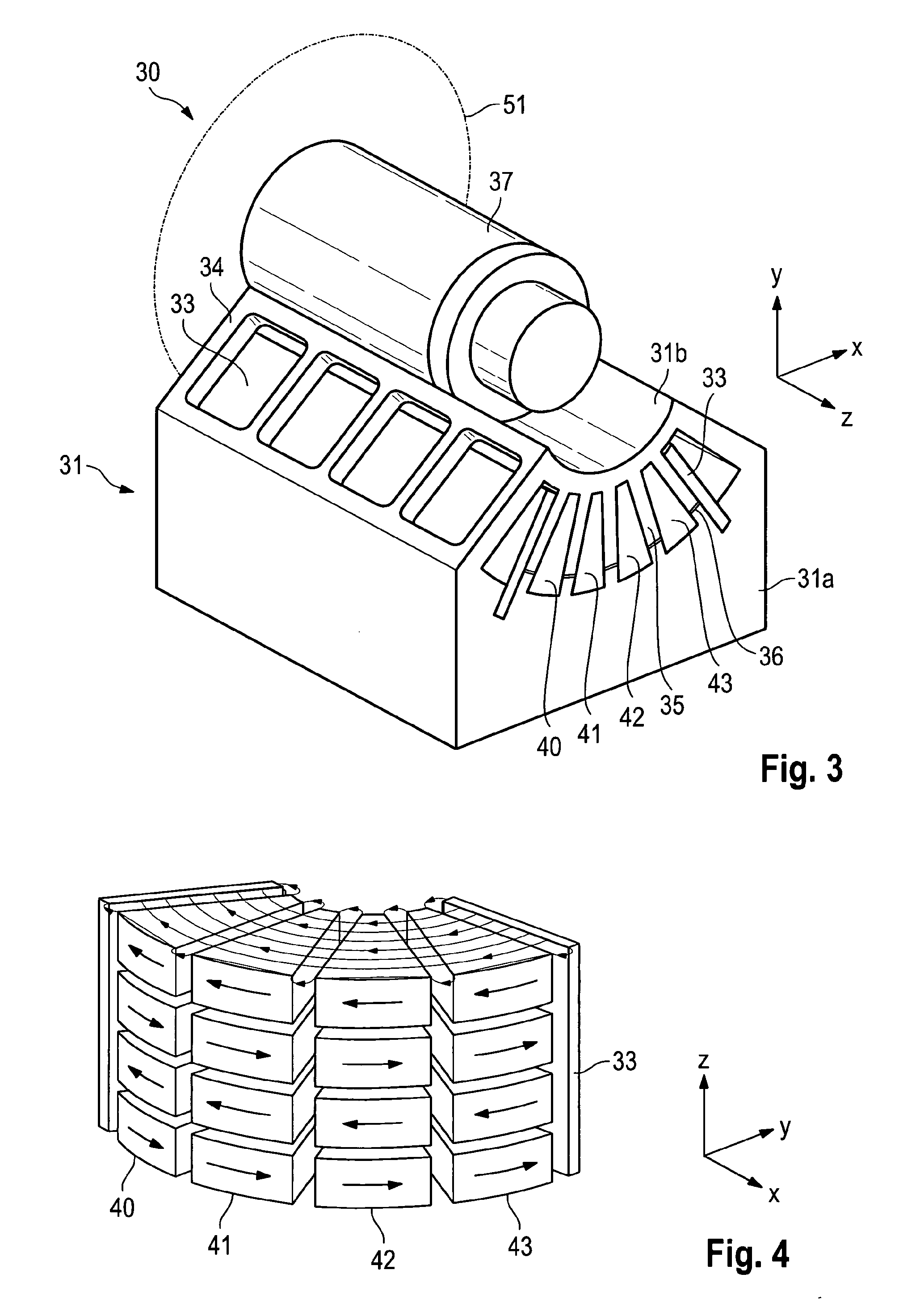Lithography device with eddy-current brake
a technology of eddy-current brake and lithography device, which is applied in the direction of photomechanical apparatus, asynchronous induction clutch/brake, instruments, etc., can solve the problems of increasing the damping effect, and achieve the effect of simplifying the design of the actuator and low maintenan
- Summary
- Abstract
- Description
- Claims
- Application Information
AI Technical Summary
Benefits of technology
Problems solved by technology
Method used
Image
Examples
first embodiment
[0036]FIG. 1 shows a schematic view of a lithography device 10 as per a first embodiment. This lithography device 10 comprises a base plate 11, on which a holder frame 12 for holding at least one optical element 13, and also a measurement frame 14 for holding a sensor arrangement 15 are provided. The lithography device 10 typically has a plurality of optical elements. However, merely one optical element 13 is illustrated in an exemplary fashion in FIG. 1 in order to explain the functionality of the lithography device 10 schematically.
[0037]A wafer receptacle 16 is provided below the optical element 13 in the illustrated example; a wafer 17, e.g. a silicon wafer, can be held in the wafer receptacle. By way of example, the wafer receptacle 16 can be embodied as a step-and-scan system, which moves the wafer 17 step-by-step relative to the base plate 11, both during the exposure and during the exposure breaks.
[0038]An illumination device 18 is provided above the optical element 13; it g...
second embodiment
[0060]In the lithography device 10 as per the first embodiment, the magnets 40-43 are rigidly connected to the holder frame 12 via the holder device 31, while the fins 35 can move between the magnets with respect to the holder frame 12 and are rigidly connected to the reaction mass 37. However, a reverse arrangement is also possible, in which the magnets are rigidly connected to the reaction mass. Such an arrangement will be described in the following second embodiment.
[0061]A lithography device 10 as per the second embodiment has the same schematic design as illustrated in FIG. 1, and so a more detailed explanation of same is abstained from in the following text. FIG. 6 schematically shows the design of an actuator 60 with an integrated damping device 70, which is embodied as an eddy-current brake. FIG. 7 shows the arrangement of the magnets of this damping device 70. FIG. 8 shows a flat projection of the magnet arrangement. The z-axis in FIG. 8 is identical to the z-axis in FIGS. ...
third embodiment
[0071]In the magnet arrangement of the second embodiment, the magnets are arranged in stacks 66-1 to 66-12. The magnets of different stacks 66-1 to 66-12 that are arranged in the same x-y plane respectively constitute a set of magnets arranged in an arc-shaped arrangement whose arc extends over 360° in the x-y plane. In the arrangement shown in FIG. 7, there are three of such sets of magnets, stacked upon each other in the z-direction. Each of those sets of magnets is roughly disk-shaped. Now, since these sets of magnets are stacked upon each other in the z-direction, the primary direction to be damped is also the z-direction. However, it is not necessary to stack these magnets linearly, and they can also be stacked upon each other in arc-shapes. This is explained in the following with reference to FIGS. 9 and 10.
[0072]FIG. 9 shows a magnet arrangement 80 of an eddy current damper in accordance with a first variant of the third embodiment. It should be noted that for illustrative re...
PUM
| Property | Measurement | Unit |
|---|---|---|
| angle | aaaaa | aaaaa |
| angle | aaaaa | aaaaa |
| angle | aaaaa | aaaaa |
Abstract
Description
Claims
Application Information
 Login to View More
Login to View More - R&D
- Intellectual Property
- Life Sciences
- Materials
- Tech Scout
- Unparalleled Data Quality
- Higher Quality Content
- 60% Fewer Hallucinations
Browse by: Latest US Patents, China's latest patents, Technical Efficacy Thesaurus, Application Domain, Technology Topic, Popular Technical Reports.
© 2025 PatSnap. All rights reserved.Legal|Privacy policy|Modern Slavery Act Transparency Statement|Sitemap|About US| Contact US: help@patsnap.com



